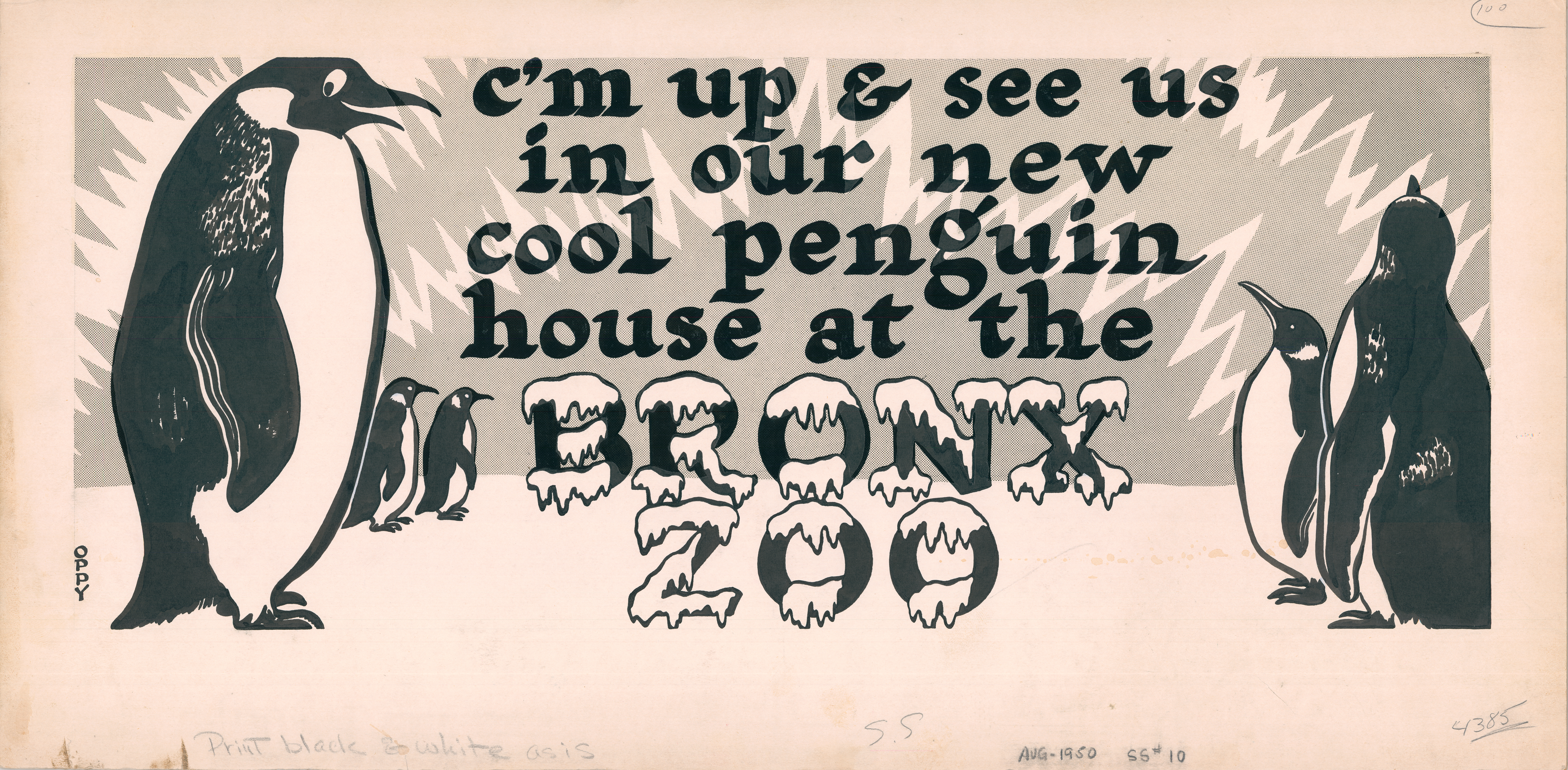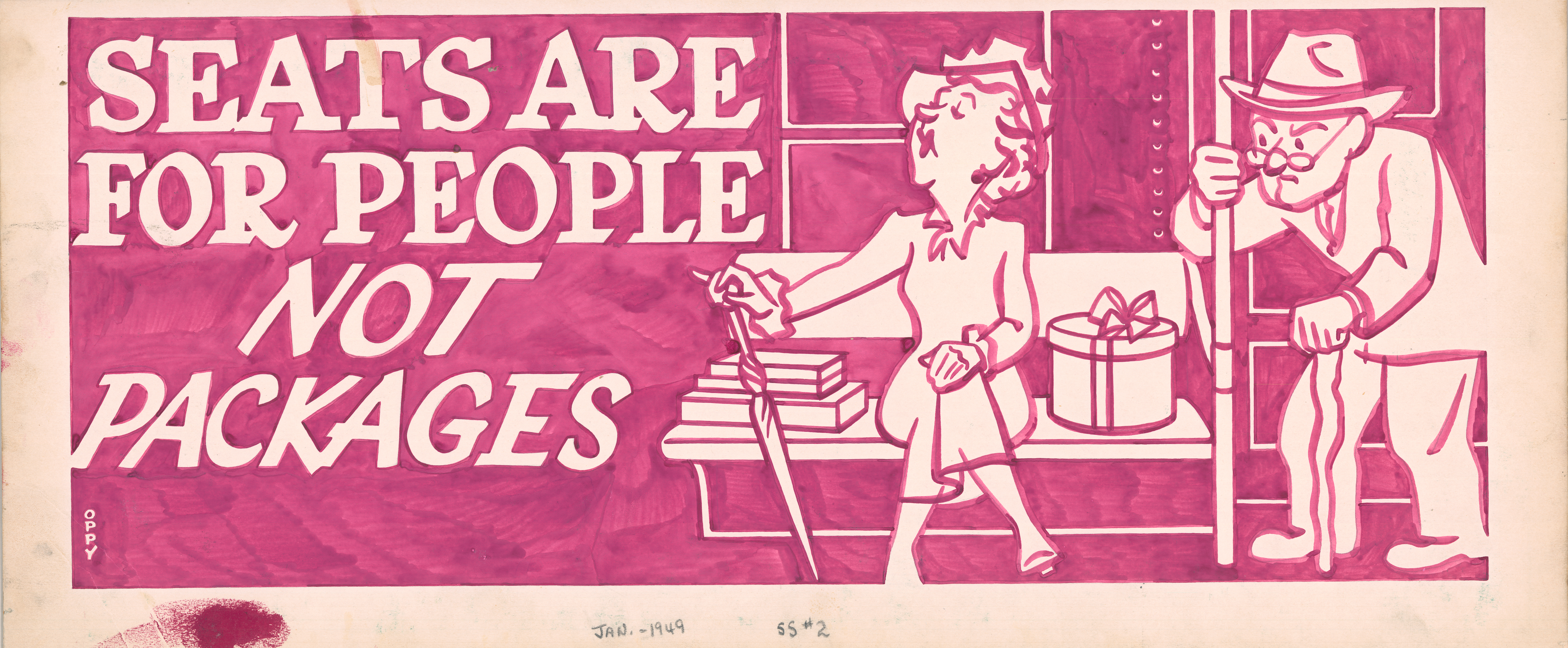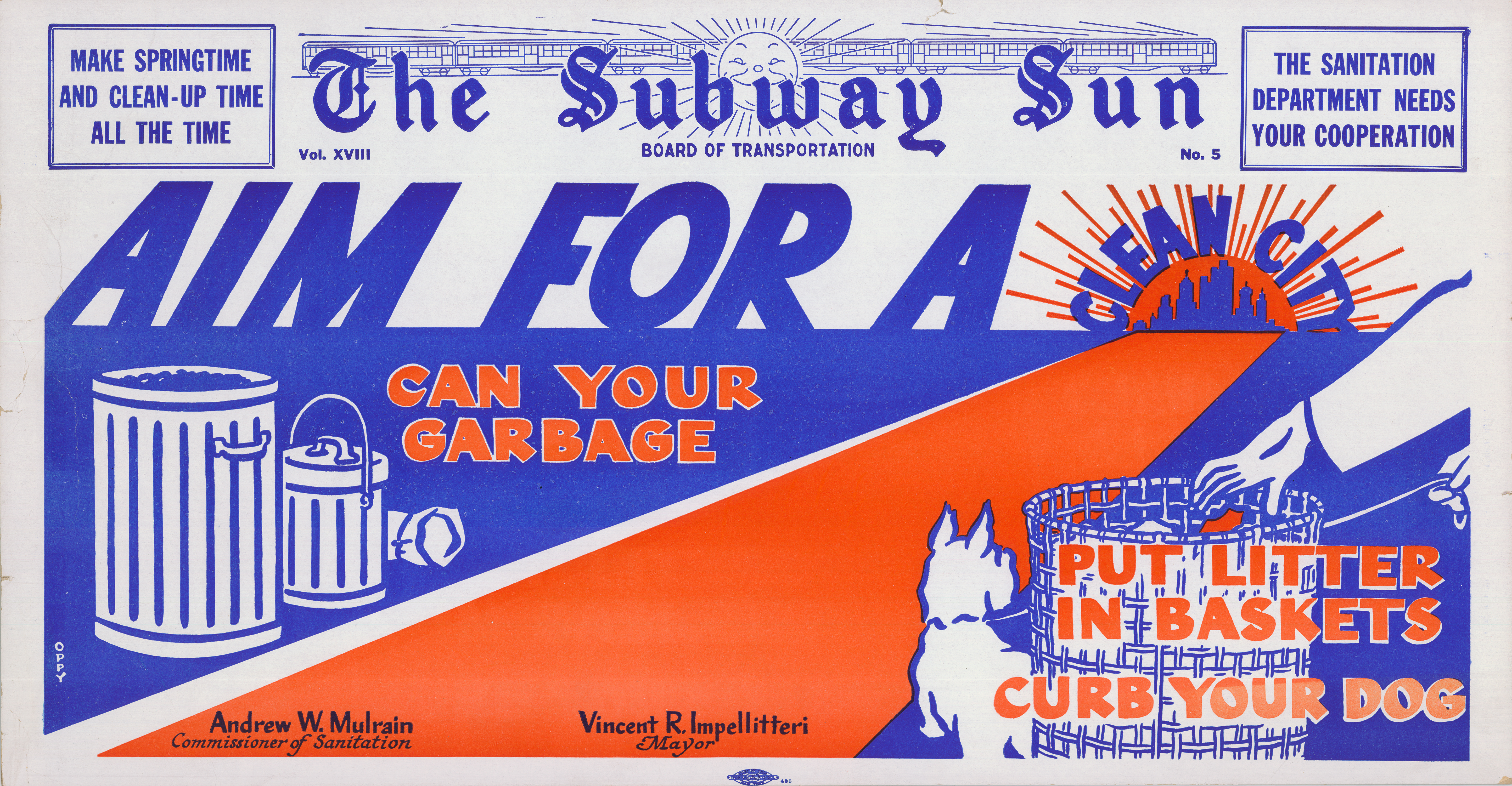The Art of Commuting: Cartoonist Amelia "Oppy" Jones
Hidden Voices began as a collaboration with the Museum of the City of New York to help City students learn about the countless individuals who are often “hidden” from traditional historical records. Each of the people highlighted in this series has made a positive impact on their communities while serving as outstanding examples of leadership, advocacy, and community service.
Today, in partnership with the New York Transit Museum, we're sharing the story of Amelia Opdyke Jones, an artist best known as "Oppy." Oppy's work appeared in the Subway Sun poster series, which often focused on encouraging New York City subway riders to respect their fellow passengers.
You can visit the New York Transit Museum in Brooklyn to see some of Oppy’s original work, which is currently on view as part of their exhibit “Shining a Light on the Subway Sun: The Art of Fred G. Cooper and Amelia Opdyke Jones.”
As any New Yorker knows, sometimes subway riders need a reminder to be considerate of their fellow travelers: don’t block the doors, or take up a seat with your bags, or leave trash behind on the train. This isn’t a new phenomenon—even back in the 1940s, subway operators were working to find effective ways to encourage people to be courteous of their fellow passengers.
In 1946, they turned to Amelia Opdyke Jones (1913–1993), a freelance advertising artist who used the penname “Oppy.” Jones became the principal designer and creative spirit behind the Subway Sun poster series after the Second World War. For twenty years, Oppy’s signature cartoon figures and comic captions appeared throughout New York City’s subway and bus systems.

Born in 1913, Amelia Ross Opdyke began drawing at an early age. Throughout her childhood, she was often housebound due to asthma, so she entertained herself with endless sketching. After graduating high school in Orange, New Jersey, she studied for two months at the Art Students’ League before launching her career as a commercial artist around 1930.
Amelia quickly caught the attention of Fred G. Cooper, editor at the original Life monthly humor magazine. Cooper, who became Amelia’s mentor, recognized the young artist’s talent and published her work in Life during the early 1930s.
Bolstered by this professional success, “Opdyke”—as she signed her early published work—went on to create a single-panel daily cartoon called The Young Idear for United Features Syndicate, which ran in newspapers from about 1932 through 1935. The cartoon was later included in United titles such as Illustrated Gags and Tip Top Comics.
In 1934, Amelia married William Jones, an insurance man with U.S. Fidelity and Guaranty in New York. After the birth of their first child the following year, she put her artistic career on hold, and like many professional women of that era, Amelia took on the role of full-time homemaker. When her children—William, Jr. and Margaritta—were old enough to attend school in the early 1940s, however, Amelia resumed her cartooning and design work.
Jones’ new clients were impressive and included major companies like Bell Telephone, American Telephone & Telegraph, and the Health Insurance Plan of New York. One of her biggest clients was Public Service of New Jersey’s power, light, and bus systems, for whom she produced dozens of posters and brochures. These included the “Reddy Kilowatt”™ comic strips, some of which featured cartoon renditions of her two children.
In the meantime, Amelia’s mentor Fred Cooper had become a principal designer on his own project: The Subway Sun. Though it was meant to look like one, the Sun was not a real newspaper, but rather a poster series that promoted the many exciting destinations you could reach by subway, as well as encouraging straphangers to mind their manners.

The series was discontinued during World War II due to funding, but by 1946, the New York Board of Transportation’s chairman Gen. Charles P. Gross had approached Fred Cooper to revive it. Cooper was too busy, but suggested his protégée, Amelia Jones, for the job. Jones, now signing her work “Oppy,” after her father’s old nickname—and as a way of disguising her gender in a male-dominated field—proved an instant popular success.
During her tenure at The Subway Sun, Oppy collaborated with an “editorial board” headed by William Jerome Daly, then the secretary of the Board of Transportation, to select poster topics. Oppy followed several themes in her work for The Subway Sun, including promoting civic pride in a clean city, public service announcements concerning health and wellness, and highlighting destinations and places of interest around the city that were accessible by transit. But she was perhaps most famous for her posters about subway etiquette and passenger behavior, as ridership was at its busiest ever.

Her illustration style, with its economy of line and striking letterforms, conveyed everyday infractions of courtesy in an effective way, leading the New York press to call her the “subway’s surrealist” and “the Emily Post of the subways”—a reference to the famous etiquette writer—whose posters were praised as “gems of subterranean subtlety”.
In an assessment of the impact of the first few years of the subway poster campaign, the New York Times said in 1948, “Some riders who formerly would block doors, hog seats, or read papers in crowded cars no longer dare… the Board of Transportation is definitely encouraged.” They noted that before the courtesy campaign started, transit police gave summonses to 10,000 passengers a month for violations of the sanitary code. But by 1948, the number of violations had been reduced to 8,000.

The initial success of the renewed Subway Sun led to greater investment in the poster series; at first, 8,000 copies of each Subway Sun number were printed and posted. By the mid-1950s, poster runs had increased to 12,000 copies, but the number of yearly issues had been reduced to about fifteen. Oppy continued drawing and designing issues of The Subway Sun until she retired in the mid-1960s.
Humorous and direct, Oppy’s cartoons served as constant reminders that you were not alone on your commute. She understood well that people had to ‘get it’ in just a glance, so she used few words but strong visuals. “I don’t expect everyone who sees my posters to heed the suggestion," she once said in the Newark Sunday News, "but certainly there will be a few who will take thoughtful notice. The most important thing to remember is that time-pressed riders won’t give a second glance to anything that looks like work... And a dash of well-placed humor will give the final touch, since people are more receptive when amused.”

In the years since Oppy retired, the MTA has introduced a series of courtesy campaigns using different styles and approaches. The latest posters that debuted in the system in October 2023 have maintained Oppy’s humorous spirit, just as the issues that today’s riders deal with are the often same as they’ve always been.
Sources
- Amelia Opdyke Jones & The Board of Transportation, [The Subway Sun, Vol. XVIII, No. 5: "Aim For A Clean City, Can Your Garbage"], 1951, XX.2018.4.29, Subway Sun Collection; New York Transit Museum.
- Amelia Opdyke Jones posing with issues of The Subway Sun, talking to a train operator, ca. 1956, 1998.23.10, Amelia “Oppy” Opdyke Jones Collection; New York Transit Museum.
- Amelia Opdyke Jones, [The Subway Sun, "high heels are hazards - wearers be wary"], n.d., 1998.23.123, Amelia "Oppy" Opdyke Jones Collection, gift of William J. Jones & Margaritta J. Friday; New York Transit Museum.
- Amelia Opdyke Jones, Artist, 80. (1994, January 1). The New York Times, 9. http://www.nytimes.com/1994/01/01/obituaries/amelia-opdyke-jones-artist-80.html.
- Newark Sunday News, November 15, 1953
- The Subway Sun, Vol. XVI, No. 2: Seats Are For People Not Packages, 1949, 1998.23.100, Amelia "Oppy" Opdyke Jones Collection, gift of William J. Jones & Margaritta J. Friday; New York Transit Museum.
- The Subway Sun, Vol. XVII, No. 10: C'm Up & See Us in Our New Cool Penguin House at the Bronx Zoo, 1950, 1998.23.108, Amelia "Oppy" Opdyke Jones Collection, gift of William J. Jones & Margaritta J. Friday; New York Transit Museum.

